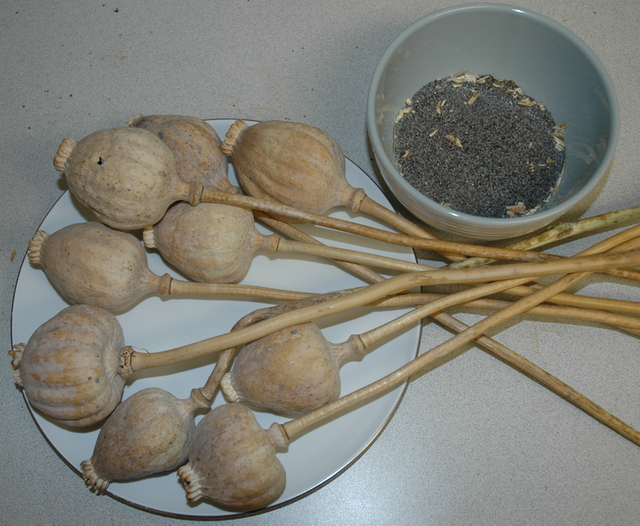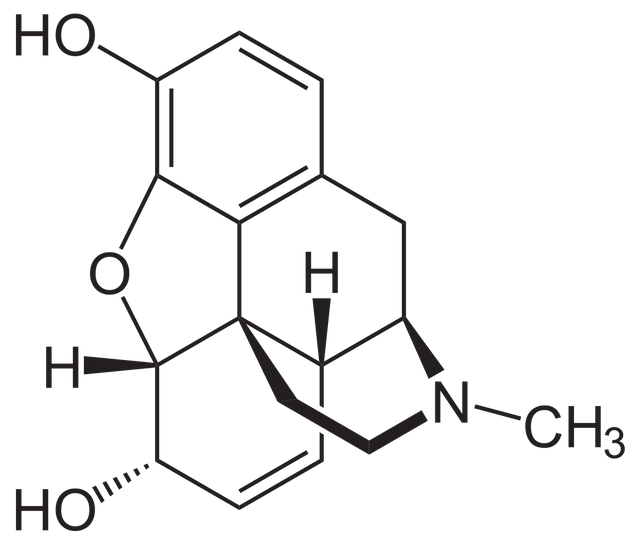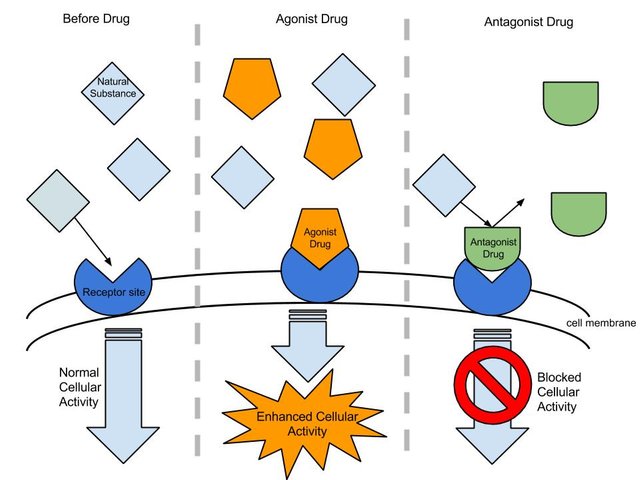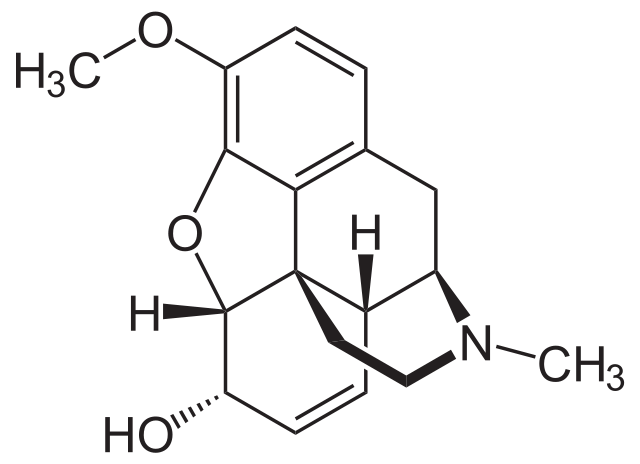
Pixabay, free images
Hipohonders, get ready! Here you can find out everything that you always wanted to know about painkillers. Pain is a symptom of many diseases and, although it is unsupportable and it makes our life difficult, it is very important. Namely, pain is a warning that our organism sends to let us know that there has been a disorder in some functions. If we carefully listen to our body, we can detect some diseases in time, so it is important that we always take the pain seriously and pay attention how often it occurs and what is the intensity of our pain. However, some pains do not have to indicate that we are seriously sick. For example, we can have a headache because we did not sleep enough, and back pain can occur because we spent a lot of time sitting in front of our computer. But, when we feel strong acute or chronic pain, we must receive some therapy.
It is very important to take control over such intensive pains. This is exactly what painkillers help us do. Especially when we are talking about opioids, which are really strong painkillers. What you may not know about them is that they are very similar to the substances we call opiates, and one of the most famous is morphine. In this article, we will see the most important effects of this substance on our body.
What is opioid?
The name opioid is used for each substance that functions similar to morphine. In the past, we also used the name opiates. This name reminds you of some narcotic, isn’t it? I am talking about opium, a substance derived from the opium poppy (Papaver somniferum). It’s interesting to know that opium has been used in some cultures for thousands of years in medical purposes (to kill the pain and in the treatment of diarrhea). Also, it was used for other purposes: achieving euphoria or causing a sleep. In some European countries, it has been used since the 17th century. You remember Baudelaire? He was one of the famous opium smokers. However, most of the people consumed opium, and society tolerated this kind of behavior. But, everything changed with the discovery of intravenous drug use. When the intravenous opium use started, the addiction became stronger and society realized that this kind of drug is really serious.

Papaver somniferum, Wikimedia commons Avriett CC BY-SA 3.0
Opium contains alkaloids close to morphine. But, there is also a papaverine, substance that relaxes smooth muscles.
Morphine is a natural alkaloid and it can be obtained from opium. It is interesting that the name morphine is actually in touch with the name of one of the Greek gods, Morpheus, the god of dreams. However, it is rarely used in therapy because of the strong dependence it creates. It is part of the treatment only for the most difficult illnesses when the pain is too strong and the patient cannot stand it. Morphine is a phenanthrene’s derivative and its chemical structure can be seen in the picture below:

Structure of the Morphine, Wikimedia commons NEUROtiker Public domain
Drugs close to morphine can be divided into two groups:
1. Morphine analogues;
2. Synthetic substitutes for morphine.
The first group of drugs consists of substances whose chemical structure is similar to morphine, and they can be obtained from it. Substitution on one or both hydroxyl groups may give variants, and the same occurs in the case of substitution on a nitrogen atom.
The second group is structurally different from morphine, and it includes:
a) a phenylpiperidine group,
b) methadone group,
c) a group of benzomorphan,
d) semi-synthetic thebaine derivatives.
The first group includes pethidine, the opioid that was firstly obtained in a completely synthetic way, and it was quite accidental. Pharmacologically, it works similar to morphine, although their chemical characteristics are not nearly identical. Fentanyl and sufentanil are derivatives which have faster and stronger effects, and they are used intravenously in case of strong pain.
The structure of the methadone is not similar to the structure of the morphine, but this can be achieved with dissolution. Methadone has a longer effect than morphine, and it works almost in the same way. Dextropropoxyphene is another drug from this group and it is used to treat the pain of weaker intensity.
The third group consists of pentazocine and cyclazocine. Their side effects could be different than side effects of morphine, and they also bind to receptors in different way.
Etorphine is the thebaine derivative and it is very close to morphine. It is most commonly used for treatments of the animals. Buprenorphine is another derivative from this group and it is less effective than morphine, although it is similar to it.
Opioid receptors
Specific receptors in our organism can recognize opioids, and scientists call them opioid receptors. There are several subtypes of these receptors, and only three of them we can mark as more significant: delta (DOR), kappa (KOR) and mu-receptors (MOR). Research has shown that pharmacological effects are most commonly performed with the help of MOR receptors.
Agonists and antagonists
So, how effective can opioids be when they bind to the receptors? We can distinguish them into two groups – agonists and antagonists. Agonists are substances that bind to the receptor and stimulate its function. Antagonists can also bind to receptors but they cannot cause any effect. In that way, antagonists just block binding of an agonist. It is important to know that the same substance can be an agonist for one kind of receptors but antagonist for some other kind of receptors. We can distinguish three basic types:
Full agonists - this group includes most of the drugs close to morphine. They show a higher affinity for mu-receptors.
Partial agonists and mixed agonists-antagonists - which include nalorphine and pentazocine. Their effect is a mixture of agonistic and antagonistic activity towards different receptors.
Antagonists - This group includes drugs that have no effect on opioid receptors, but they have the ability to inhibit the effects of other opioids. The most important antagonists are naltrexone and naloxone.

Agonists and antagonist binding to the receptor WikipediaDolleyjCC BY-SA 3.0
How do opioids work?
It is possible that no other group of drugs has been studied as much as opioids. The main task was to find out how they really work and how to improve their use. Morphine could not be used in treatments because of the strong dependence it causes. Scientists have managed to clarify questions about the types of receptors, but a lot of things remained unclear when it comes to the physiological effect of opioids.
Most of the opioid receptors are found in our brain, so the analgesic effect is achieved mostly in CNS. Morphine mostly affects the central nervous system (acute and chronic pains) and the gastrointestinal tract. Besides its strong antinociceptive effect (pain reduction), morphine also produces a strong sense of satisfaction. Because of this patients are more relaxed and the tension is reduced. Morphine is used as medicine for some of the most difficult illnesses. If it is used intravenously, as well as heroin, morphine causes euphoria. The level of euphoria is never the same and it depends on how much the patient has got used to chronic pain. There are some opioids that does not cause the euphoria and codeine is one of them.
However, opioids can also put our lives in danger. They can cause a respiratory depression, which is also, same as analgesia, achieved through the mu-receptor. Opioids make breathing slower, and in case of acute poisoning they can lead to the complete depression of breathing, and then to death.
Some of the opioids also have an antitussive effect. That means they can stop a cough. One of the most famous is codeine, and scientists have not yet figured out why opioids show this effect. Some of the opioids may cause nausea and vomiting, and this is most common with patients who took morphine for the first time.

Structure of Codeine, Wikimedia commonsNEUROtiker Public domain
Opioids cause constriction of the pupils (miosis). The pupils of the person who took heroin or person who overdosed with opioids have a size of a pin.

Constriction of the pupils, Wikimedia commons Public Domain
The drugs of this group, especially morphine, also cause constipation. The reason for this side effect is their activity in the gastrointestinal tract. They can also cause pain in the gallbladder because they have a negative effect on the bile ducts and they should be avoided when patients already have problems with the bile duct stones.
Morphine can also cause the release of histamine. Because of this in the place where the needle entered patient can have a red spot or itching. Morphine should not be given to patients suffering from asthma, because of bronchoconstriction. Pethidine is recommended instead of it because there are no side effects. Morphine can also cause a drop in blood pressure (hypotension) and heart failure (bradycardia). Scientists have not yet found out the relationship between morphine and a weak immune system, but some of them believe that long-term using of this medicine can significantly affect the immunity.
Tolerance and addiction
Opioids (especially morphine) rapidly develop tolerance, which means that the patient needs a higher daily dose of the drug every time. For this reason, addicts consume higher and higher doses.
Opioids cause physical and psychological dependence. Signs of physical addiction manifest as a abstinent crisis, with fever, sweating, insomnia, vomiting, diarrhea, etc. The person feels nervous and exhausted, and it's hard to stay without the drug in the first few days. After 8 or 10 days, these symptoms become reduced.
Pharmacokinetic properties
Morphine is most often used in the intravenous or intramuscular way when the patient has strong acute pain. Sometimes it can be used per os (especially when the patient is suffering from some chronic pain). It gets absorbed slowly and sometimes we cannot predict rapidity of its effects. Codeine is most often used per os and it is rapidly absorbed. Analogues of the morphine are eliminated from the organism after 3-6 hours, and hepatic metabolism is the most responsible for their elimination. Some opioids are also eliminated from our organism through the urine.

Reference
Suzana Mimica Matanović,Farmakokinetika i farmakodinamika analgetikaOsjek, 2014.
Vladislav Varagić, Milenko Milošević, Farmakologija, Beograd, 2001.
Nora D. Volkow, Thomas McLellan, Opioid Abuse in Chronic Pain — Misconceptions and Mitigation Strategies, 2016.

Congratulations! Your post has been selected as a daily Steemit truffle! It is listed on rank 3 of all contributions awarded today. You can find the TOP DAILY TRUFFLE PICKS HERE.
I upvoted your contribution because to my mind your post is at least 9 SBD worth and should receive 255 votes. It's now up to the lovely Steemit community to make this come true.
I am
TrufflePig, an Artificial Intelligence Bot that helps minnows and content curators using Machine Learning. If you are curious how I select content, you can find an explanation here!Have a nice day and sincerely yours,

TrufflePigDownvoting a post can decrease pending rewards and make it less visible. Common reasons:
Submit
This post has been voted on by the SteemSTEM curation team and voting trail in collaboration with @utopian-io and @curie.
If you appreciate the work we are doing then consider voting all three projects for witness by selecting stem.witness, utopian-io and curie!
For additional information please join us on the SteemSTEM discord and to get to know the rest of the community!
Downvoting a post can decrease pending rewards and make it less visible. Common reasons:
Submit
Hi @anasav!
Your post was upvoted by Utopian.io in cooperation with @steemstem - supporting knowledge, innovation and technological advancement on the Steem Blockchain.
Contribute to Open Source with utopian.io
Learn how to contribute on our website and join the new open source economy.
Want to chat? Join the Utopian Community on Discord https://discord.gg/h52nFrV
Downvoting a post can decrease pending rewards and make it less visible. Common reasons:
Submit
Congratulations @anasav! You have completed the following achievement on the Steem blockchain and have been rewarded with new badge(s) :
Click here to view your Board of Honor
If you no longer want to receive notifications, reply to this comment with the word
STOPDownvoting a post can decrease pending rewards and make it less visible. Common reasons:
Submit
Congratulations @anasav! You have completed the following achievement on the Steem blockchain and have been rewarded with new badge(s) :
Click here to view your Board of Honor
If you no longer want to receive notifications, reply to this comment with the word
STOPDownvoting a post can decrease pending rewards and make it less visible. Common reasons:
Submit